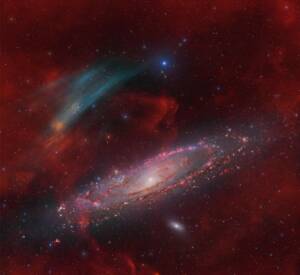
Discovery of the M31 [OIII] emission arc
Recently, a major discovery by an international team of amateur astronomers and scientists has become a huge online hit, and this new discovery is just located in one of the
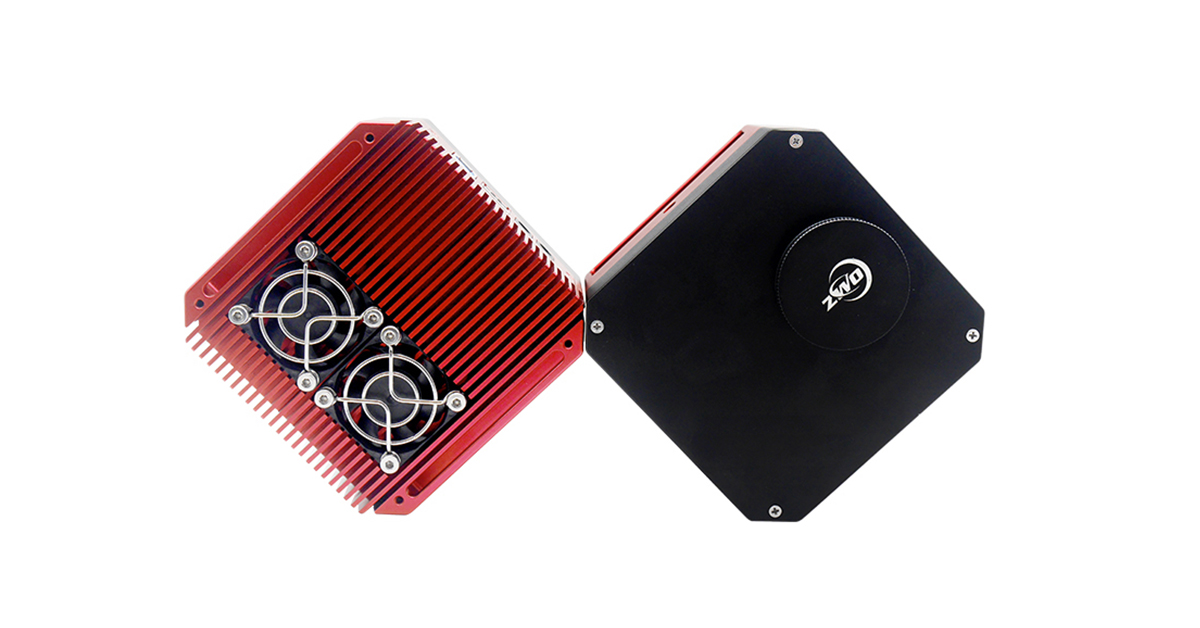
ZWO have been synonymous with creating high quality, yet affordable cameras, since their entry into the astro imaging world in 2011.
Since then ZWO have taken the market by storm with their renown red anodised CMOS cameras and there will not be many in astrophotography who either don’t own a ZWO product, or, are at least very familiar with the product range.
I have been a long-time user of ZWO products and have found Sam Wen’s team to be fabulously supportive and responsive to requests for new features and new product ideas. So much so that after a visit by him to New Zealand, Sam and I struck up a dialogue on how some active imagers could help support his efforts and so I got involved with the ZWO product development team. 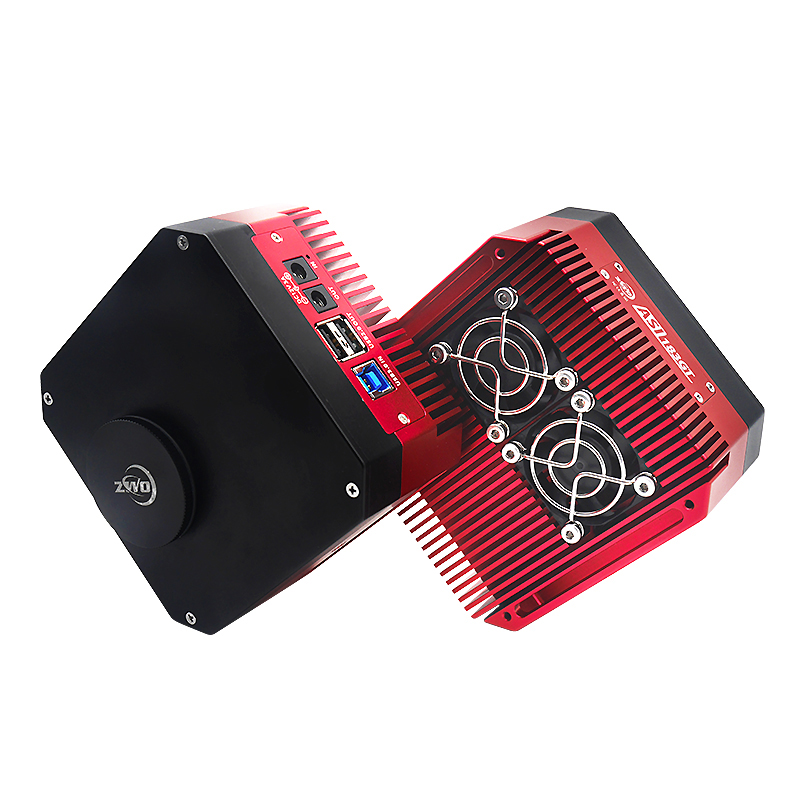
So, for complete transparency, I will say that I am a member of the ZWO product development team and I, along with a small number of other active astro imagers, alpha/beta test a lot of ZWO’s products to ensure they deliver the best possible product on release. A prime example of that is the ASIAIR and the test and development work that has gone into that, with many hundreds of hours committed by the test team even before the ASIAIR software releases are put into production.
I will also add that I did not get paid in dollars or in kind for this review, I and the others provide our input as we enjoy the ZWO product set and are keen to ensure they include the features that any active astro imager would want.
When I heard from Sam about the ASI GT range, I asked if could test them before release and Sam kindly invited me to help test the ASI1600GT which is very familiar to me as I use an ASI1600MM as my main mono CMOS camera.
ZWO launched in September 2012 with the now famous planetary camera, the ASI120. The camera took the astrophotography world by storm thanks to the high sensitivity and low read noise of the chosen ASI120 sensor. It became the first planetary CMOS camera which could truly outperform a CCD sensor.
May 2016 marked another major milestone for ZWO and arguably the biggest to date, with the release of the ubiquitous ASI1600 series of cameras. Without a doubt the ASI1600 has changed the deep sky imaging world thanks to it Panasonic sensor’s amazingly low read noise and dark current.

The ASI1600 series cameras are the first cooled CMOS cameras suitable for DSO imaging and a game changer as sales pushed the ASI1600 into the leading position, overtaking the sale of CCD cameras for DSO imaging.
With the recent announcement that KAF CCD devices have ceased production, CMOS camera are now the de facto choice for astro imagers.
Indeed, today you cannot pick up an astronomy magazine or visit an astro imaging webpage without seeing stunning pictures from the ASI1600 and ASI183 cameras using a variety of LRGB or narrowband filters and almost invariably integrated with ZWO’s EFW filter wheel and Off Axis Guider. This truly winning combination is seen on many selected Images of the Day and for good reason.

Never one to stand still, ZWO have created an improved version of the ASI1600 and ASI183 monochrome cameras with the release of this, their latest design, the ASI1600GT and ASI183GT. These cameras feature an all new integrated design with built in filter wheel, a first for ZWO.
For those new to these ZWO mono cameras, the two new GT cameras are based on the original ASI1600 and ASI183 models respectively and nothing has changed around the electronics and sensors from the originals, but don’t let that fool you. There is a lot more to the GT range than a simple re boxing.
The ASI1600GT is a mono CMOS camera based on the 16.4mpx Panasonic MN34230 chip. This 4/3” chip measures 17.1mm x 13.4mm has a resolution of 4656 x 3520 pixels at 3.8um.
This extremely well-known CMOS chip has a read noise of 1.2e, QE of 60% and full well of 20000e.
The latest ZWO version has a 256MB DDR3 buffer to improve transmission speeds, transfer reliability and reduce USB noise.

The ASI183GT has a much smaller pixel size which should be taken into account when reviewing these two cameras side by side.
The ASI183GT uses a SONY IMX183 chip with a 1” diagonal size (13.2mm x 8.8mm) – the smaller chip has a much higher pixel density however and runs at 5496 x 3672 resolution with a tiny 2.4um pixel size. It has a read noise of 1.6e and QE of 84% and full well of 15000e. Like the ASI1600 it also uses a 256MB DDR3 buffer.

Both cameras come with the standard USB3 connection and inbuilt USB hubs which has been a feature of ZWO ASI cooled cameras for some time. I was glad to see this has been retained even with the compact size GT cameras.
The first thing that is striking is the new look. The ASI GT range now features an all new compact body that houses an integral 5 position filter wheel capable of carrying 1.25” mounted and 31mm unmounted filters. Its beautifully compact and beautifully constructed.
Important Note: The thickness of the 1.25” filter cannot exceed 7mm (without threads), and the thread must be shorter than 2.5mm to avoid the filter wheel striking the camera housing.
Access to the filters is via the front cover plate which is held in place by 4 screws. Unlike other integrated filter wheels, the ASI GT range wheel is not removable, so adding a second wheel fitted with a different set of filters isn’t possible sadly.
The cover plate has a 42mm T thread fitted to it and the housing is milled out of aluminium and is nicely anodised, yet remains relatively light weight, thanks to the use of modern high-grade aircraft aluminium.
The new integrated design is a squarer package than the normal soda can sized ASI cameras and measures 110mm x 110mm x 60mm and weighs just over 800g.
The red anodised rear face now houses 2 maglev fans which are set into the cooling fins and this improved heatsinking has created an a much-improved cooling capacity which has now increased to -45c below ambient. I found the camera cooled down much faster and that is due to the improved cooling capability of the GT style body. The cooling device fitted hasn’t been changed – just the heatsinking and additional of a second fan, which has led to this welcome improvement.
The bottom face houses the standard ASI style connections. Users will be pleased to note no change to the inclusion of the integrated USB hub which has been retained, along with the USB3 connector.

The 12V DC connector has now been named 12V IN and has a companion pass through outlet, which can be used to power other 12V devices. This is rated at 3A dependant on the DC power supply being capable of supply the camera and this connector at the same time. I utilised this to power my ZWO EAF auto focuser which requires around 1A, a handy way to reduce yet another cable and a nice touch.
Installation of the filters is similar to the process on the EFW filter wheel but requiring removal of the front plate and either screwing in the 1.25” filters or, in the case of the 31mm unmounted versions, mounting the filter using the small screws supplied in the kit.
One of the great things I love about ZWO cameras is that everything you need is included in the box and the ASI GT range are no different, with a set of filter masks and screws are included in the kit.

Mounting the camera was easy with the included adapters. ZWO cleverly include adapters and extension tubes to reach the most common back focus distance of 55mm.
The GT cameras weigh in a 100
g or so less than the ASI1600/EFW combo although we do lose the extra 3 positions on the filter wheel, something I can personally live with as much of my imaging is narrowband.
Initial bench testing showed that the improved cooling works well, easily reaching -20c sensor temperature, even in my warm office with the cooler running at 60% to maintain it. Something the ASI1600 would struggle to do.
Darks showed no issues with noise or patterning and cooling was faster and able to reach temperature quickly even indoors.
Longer dark tests revealed a nice clean frame and no signs of noise. There is slight amp glow in the right hand side as found in the ASI1600 range but my sample tests suggested that this was slightly less than my ASI1600 (V3), that might be due to the DDR buffer or improved cooling but it was quite noticeably reduced on my supplied test sample.
After taking a set of darks using SGP I installed the ASI1600GT onto my trusty ES102 FCD100 and was pleasantly surprised by the look and feel.
It feels much more compact and less obtrusive as the smaller footprint does not protrude as much as my 8 position EFW. Which isn’t any real surprise, but I was interested how much difference it would make.
I liked the square neat design and found the 12V outlet means less cable clutter. Of course, as the filter wheel is integrated there is also no USB cable for the wheel required – again less cable mess as this sticks out a little on the ASI1600/EFW combo. I found that most of the time the ASI1600GT did not foul my tripod at all whereas with the standard camera/EFW combo I did need to be a little more careful.
Overall, it looks remarkably neat and even though I own an ASI1600 I found myself drawn to the compact design of the GT range. The build quality is nice and of course it all comes with the necessary hardware in the box. One thing missing in the GT range is the padded case, I assume as this format did not fit the round ASI style.
The weather has been very poor this winter, so test time has been limited but I have been extremely impressed by the ASI1600GT in the time I have been able to use it.
Its performance is in line with that expected of the ASI1600 range, but I really liked the improved cooling on warm spring nights and as I was able to cool down quickly even on warm humid nights. It really helped that I could get to -20c on the bench too it really helped in my test and setups.
In use the ASI1600GT performed as expected, the inbuilt filter wheel was quiet and was plug and play with the same drivers as my EFW which made for an easy installation with Sequence Generator Pro. Performance was on par with the 1600 but as I mentioned much quicker to get to operational temperature even on a warm night with the improved cooling.
The images from the ASI1600 need little introduction. I would suggest any prospective buyer browses the images at sites such as Astrobin for some sample images across varying scopes, filter types and combinations of data.
At first glance you might be forgiven for dismissing the GT range as nothing more than a physical reconfiguration of the original ASI1600/183 cameras with little else to show for the change, but I did not find this to be the case at all.
The new integrated design is a welcome addition to the ZWO range and even though the filter wheel cannot be changed out I still found the smaller compact size of the GT cameras to be beneficial.
The smaller size has benefits in that the cable count is reduced and a 12V pass through means less clutter at the camera end of my scopes.
The improved cooling is a big plus and was immediately obvious when doing darks in my warm office, something I could have not achieved with my ASI1600 (v3).
Overall there is a lot to like about the GT cameras and I think they will be as popular as the standard ASI1600/183 range. A upside of these new cameras might be an influx of good second-hand cameras as users trade up so it’s worth keeping an eye on the markets as it becomes available.
The GT cameras will be released at the end of November 2019 from the normal dealer channels, many who are already taking pre orders.

Recently, a major discovery by an international team of amateur astronomers and scientists has become a huge online hit, and this new discovery is just located in one of the

Hello,Sara Harvey,thanks for accepting our interview invitation. Congratulations on winning the ASIWEEK competition in week! Q1: At first, congratulation that your nice image won #ASIWEEK. Can you introduce yourself to
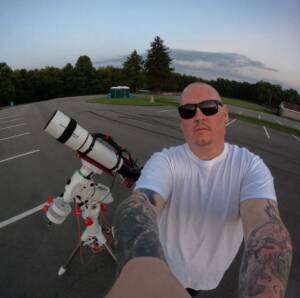
Astrophotography is more than just capturing images of the night sky—it’s a journey of discovery, patience, and creativity. For this passionate astrophotographer, what started as a chance encounter with a
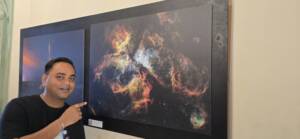
Taranjot Singh, an Indian origin Australian astrophotographer who is making waves on the international stage. Taranjot has been recognized as one of the Top 5 finalists in the prestigious Siena
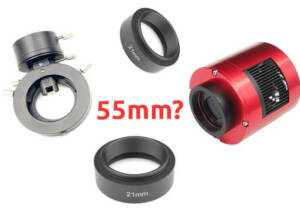
The back focal length is advised by telescope manufacturers. Since most telescopes have a 55mm back focal length, we are here to provide detailed instructions for all ASI cooled cameras.Please
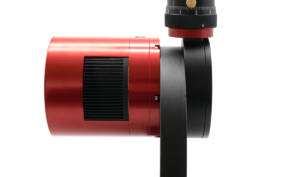
How to connect ASI6200MM Pro to 2″ EFW/M54 filter drawer and OAG-L? How many solutions are there for ASI6200MM Pro to get 55mm back focus length? If you are still
2 Comments
Ken Harrison
With the built-in filter wheel – what about the provision for Off Axis Guiders?
Ken
Moson
You can connect ASI1600GT and ASI183GT with OAG by a M42-M48 adapter,as the following way:ASI1600GT camera-(M42-M48F-12L extender)-OAG-(M42-M48 adapter)-telescope.
Attach the link for your reference.https://astronomy-imaging-camera.com/product/asi-gt-camera